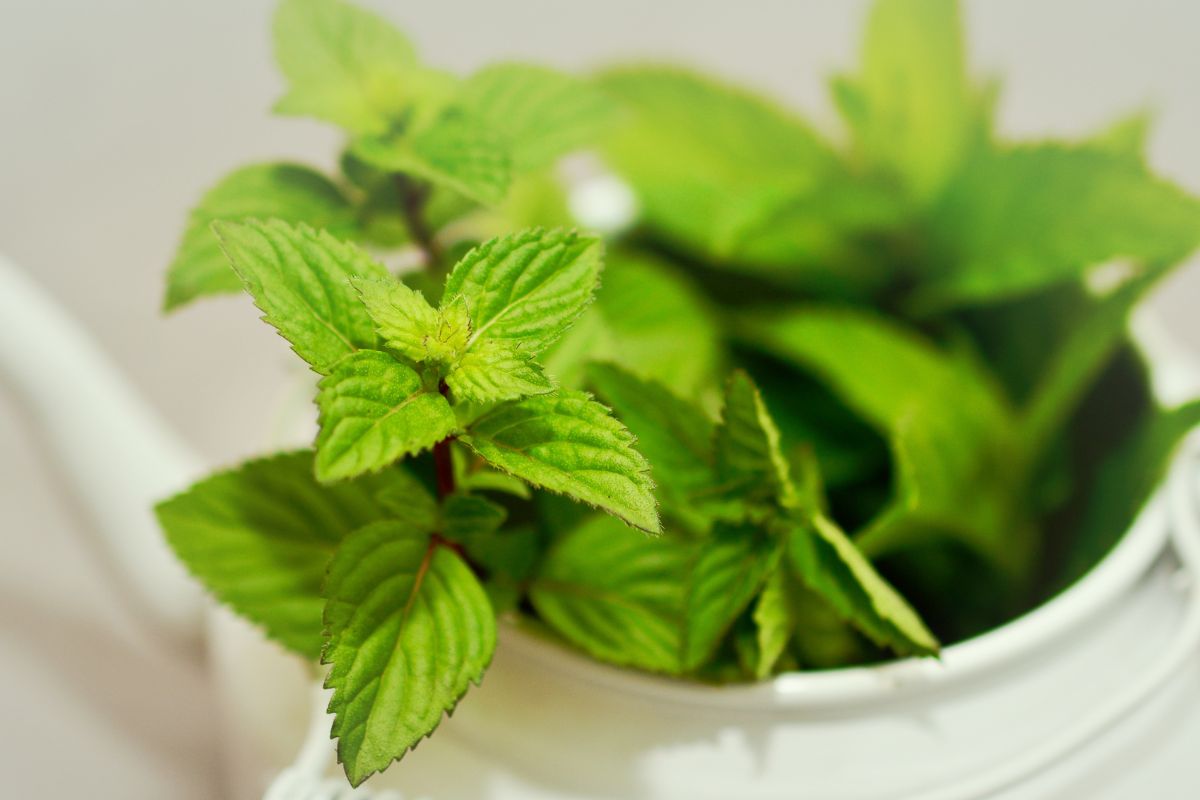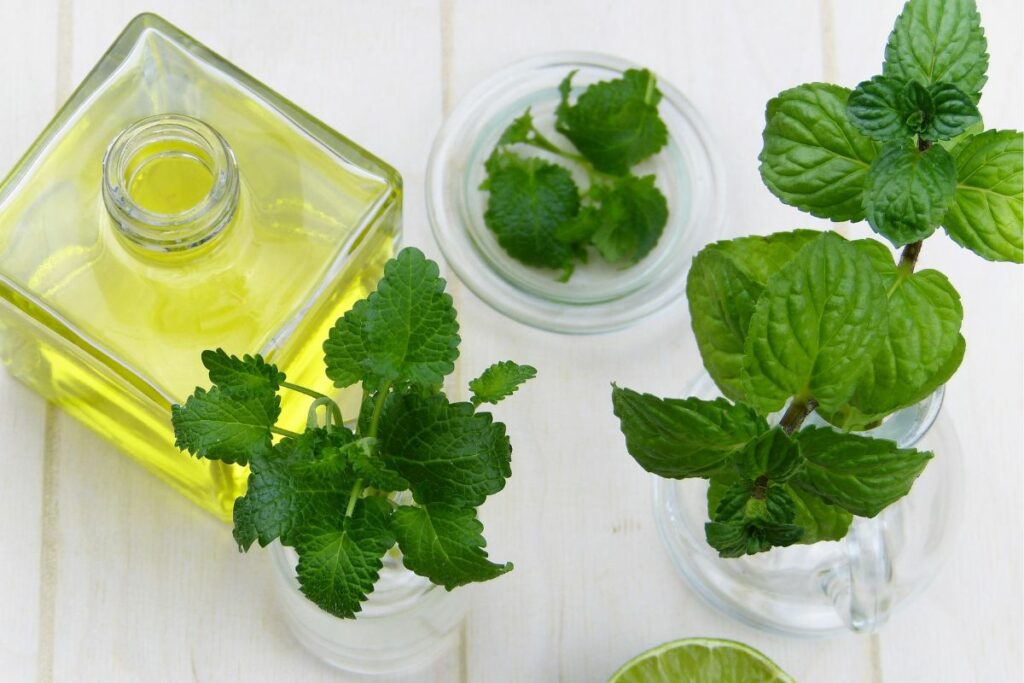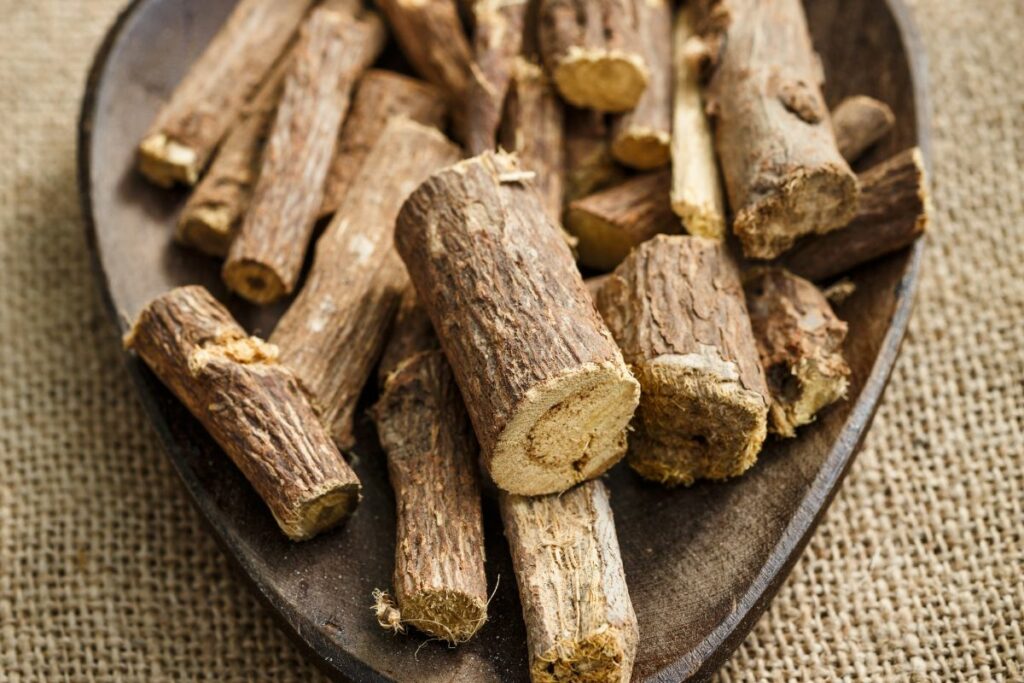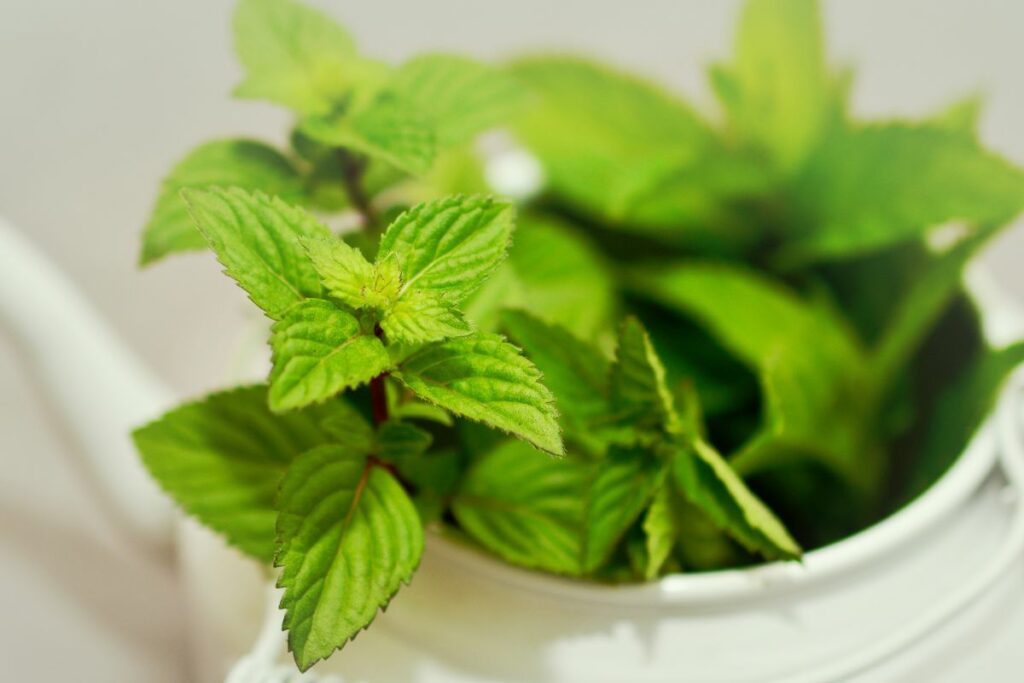Mint is a popular herb that is widely used in the culinary world for its refreshing taste and aroma. It is a common ingredient in many dishes, including desserts, drinks, and savory dishes. However, there are times when you may not have fresh mint on hand or may be allergic to it. In such cases, it is helpful to know about the best substitutes for mint that can be used in cooking.
One of the best substitutes for mint is basil. Basil has a similar flavor profile to mint and can be used in dishes like salads, pasta, and soups. It has a slightly sweet and peppery taste that can add depth to your dishes. Other herbs like parsley, rosemary, and tarragon can also be used as substitutes for mint, depending on the recipe.
If you are looking for a substitute for fresh mint in desserts, peppermint extract is a great option. It is a concentrated form of mint that can be used in small amounts to add flavor to baked goods and desserts. However, it is important to use it sparingly as it can be overpowering. With these substitutes, you can easily replace mint in your recipes and still achieve a delicious and flavorful dish.

Contents
Understanding Mint
Mint is an aromatic and refreshing herb that is widely used in cooking, beverages, and even in personal care products. It belongs to the Mentha genus of the Lamiaceae family, which includes other herbs like basil, rosemary, and sage.
The mint plant is a perennial herb that grows up to 2 feet tall and has square stems, opposite leaves, and small purple, pink, or white flowers. The leaves of the mint plant are the most commonly used part, and they can be harvested throughout the growing season.
There are many varieties of mint, including peppermint, spearmint, apple mint, and chocolate mint, each with its own unique flavor and aroma. Peppermint is the most commonly used variety and is known for its strong menthol flavor.
Mint leaves are often used fresh or dried in a variety of dishes, including salads, soups, sauces, and desserts. They are also used to flavor beverages like tea, lemonade, and cocktails.
In addition to its culinary uses, mint is also used for its therapeutic properties. It is believed to have a calming effect on the body and can be used to relieve nausea, headaches, and digestive issues.
Overall, mint is a versatile herb that adds a refreshing and aromatic touch to many dishes and products. Whether you’re using it for cooking or for its therapeutic benefits, mint is a natural and flavorful ingredient that can be enjoyed in many different ways.
Common Uses of Mint in Cooking
Mint is a versatile herb that can be used in both sweet and savoury dishes. Here are some common uses of mint in cooking:
Beverages
Mint is a popular ingredient in a variety of beverages, including mojitos, cocktails, and herbal mint tea. It adds a refreshing and cooling flavor to drinks, making it perfect for hot summer days.

Desserts
Mint is a common ingredient in desserts, especially chocolate desserts. It pairs well with chocolate, adding a refreshing contrast to the rich, sweet flavor of chocolate.
Savoury Dishes
Mint is also used in a variety of savoury dishes, including soups, stews, curries, and casseroles. It adds a fresh, bright flavor to these dishes and pairs well with meat, seafood, and vegetables.
Salads
Mint is a popular ingredient in salads, adding a refreshing and cooling flavor. It pairs well with fruits like watermelon and strawberries, as well as vegetables like cucumber and tomatoes.
Sauces and Dressings
Mint can be used to add flavor to sauces and dressings. It pairs well with yogurt, making it a common ingredient in tzatziki sauce. It can also be added to vinaigrettes and other salad dressings.
Baked Goods
Mint can be used to add flavor to baked goods, such as cookies, brownies, and cakes. It pairs well with chocolate and can also be used to add a refreshing flavor to buttercream frosting.
Garnish
Mint is often used as a garnish for dishes, adding a pop of color and a refreshing flavor. It can be used to garnish cocktails, desserts, and savoury dishes like chicken and pizza.
Overall, mint is a versatile herb that can be used in a variety of dishes. Its refreshing and cooling flavor makes it a popular ingredient in both sweet and savoury dishes.

Why Substitute Mint
There are many reasons why one might need to substitute mint in a recipe. Perhaps you don’t have any fresh mint on hand, or maybe you’re not a fan of the flavor. Whatever the reason, there are plenty of substitutes available that can provide a similar taste and aroma to your dish.
Mint is a unique herb that has a refreshing and cooling taste. It is commonly used in desserts, drinks, and savory dishes. However, not everyone enjoys the flavor of mint, and some people may have an allergy or sensitivity to it. In these cases, it is important to have alternatives available.
Another reason to substitute mint is availability. Fresh mint can be difficult to find in certain areas or during certain seasons. Fortunately, there are many other herbs and spices that can provide a similar taste profile.
When substituting mint, it is important to consider the overall flavor of the dish and the intensity of the mint flavor. Some substitutes, like basil, have a similar taste but are not as strong as mint. Others, like peppermint extract, are much more potent and should be used sparingly.
Fresh mint is often used in recipes, but dried mint can also be used as a substitute. Dried mint has a more concentrated flavor than fresh mint, so it should be used in smaller quantities.
In summary, there are many reasons to substitute mint in a recipe, from personal preference to availability. With the right substitute, you can still achieve a delicious and flavorful dish.
Fresh Mint Substitutes
Fresh mint is a popular herb used in a variety of dishes, from salads to cocktails. However, it is not always available or in season. Luckily, there are several other herbs that can be used as substitutes for fresh mint. Here are some of the best options:
1. Basil
Basil is one of the most common substitutes for fresh mint. It has a similar tender leaf as mint and is deeply aromatic. Basil will maintain the freshness of the mint but it will also add a sweet peppery aroma to your food. You will have to use a bit more basil compared to the quantity of mint you would add, though, in order to get the same aromatic intensity.

2. Parsley
Parsley is another herb that can be used as a substitute for fresh mint. It has a fresh and slightly bitter taste, which makes it a good option for savory dishes. Parsley will not provide the same cooling effect as mint, but it will add a bright and fresh flavor to your dish.
3. Cilantro
Cilantro is a popular herb in Latin American and Asian cuisine. It has a fresh, citrusy flavor that can be used as a substitute for fresh mint. Cilantro will not provide the same cooling effect as mint, but it will add a bright and fresh flavor to your dish.
4. Tarragon
Tarragon is a herb with a sweet and aromatic flavor that can be used as a substitute for fresh mint. It has a subtle licorice flavor that can add depth to your dish. Tarragon is a good option for savory dishes, such as roasted chicken or fish.
5. Coriander
Coriander, also known as cilantro seed, is a spice that can be used as a substitute for fresh mint. It has a citrusy and slightly sweet flavor that can add depth to your dish. Coriander is a good option for savory dishes, such as curries or stews.
6. Spearmint
Spearmint is a type of mint that has a sweeter and milder flavor than peppermint. It can be used as a substitute for fresh mint in salads, cocktails, and other dishes. Spearmint will provide a similar cooling effect as fresh mint, but it will be less intense.
7. Lemon Balm
Lemon balm is a herb with a lemony flavor that can be used as a substitute for fresh mint. It has a subtle minty flavor that can add depth to your dish. Lemon balm is a good option for sweet dishes, such as desserts or fruit salads.
Overall, there are several herbs that can be used as substitutes for fresh mint. Each herb has its own unique flavor profile, so it is important to choose the right one for your dish. Whether you are making a savory or sweet dish, there is a fresh mint substitute that can add depth and flavor to your recipe.

Dried Mint Substitutes
Dried mint is a common ingredient in many recipes, but what do you do if you don’t have any on hand? Fortunately, there are several dried mint substitutes that can be used in a pinch.
Rosemary
Rosemary is a great substitute for dried mint because it has a similar flavor profile. It has a slightly bitter taste and a strong aroma that can add depth to many dishes. Rosemary is a popular herb in Mediterranean cuisine and is often used in dishes like roasted meats, vegetables, and stews.
Marjoram
Marjoram is another herb that can be used as a substitute for dried mint. It has a slightly sweet and citrusy flavor that pairs well with many dishes. Marjoram is often used in Italian cuisine and is a common ingredient in pasta sauces, soups, and stews.
Oregano
Oregano is a popular herb that can be used as a substitute for dried mint. It has a strong, slightly bitter flavor that can add depth to many dishes. Oregano is often used in Mediterranean and Mexican cuisine and is a common ingredient in pizza sauce, chili, and tacos.
Sage
Sage is another herb that can be used as a substitute for dried mint. It has a slightly bitter taste and a strong aroma that can add depth to many dishes. Sage is often used in Mediterranean and Middle Eastern cuisine and is a common ingredient in poultry dishes, stuffing, and sausage.
Thyme
Thyme is a popular herb that can be used as a substitute for dried mint. It has a slightly sweet and earthy flavor that pairs well with many dishes. Thyme is often used in French and Mediterranean cuisine and is a common ingredient in roasted meats, vegetables, and stews.

Dried Mint Leaves
If you don’t have dried mint, you can also use fresh mint leaves as a substitute. Simply chop the leaves finely and use them in place of dried mint in your recipe. Keep in mind that fresh mint has a stronger flavor than dried mint, so you may need to use less of it.
Overall, there are several dried mint substitutes that can be used in a pinch. Whether you choose to use rosemary, marjoram, oregano, sage, thyme, or fresh mint leaves, each herb will add its own unique flavor to your dish.
Flavor Profiles of Mint Substitutes
While nothing can perfectly replicate the unique flavor profile of mint, there are several substitutes that can be used in a variety of dishes. Here are some of the most common mint substitutes and their flavor profiles:
Basil
Basil is a popular substitute for mint and is commonly used in Italian cuisine. While it doesn’t have the same minty flavor, it does have a sweet and slightly peppery taste with a strong, sweet aroma. Basil belongs to the same family as mint and its leaves can be finely chopped to pass for those of mint.
Peppermint Extract
Peppermint extract is a strong and aromatic substitute for fresh mint leaves. It is commonly used in baking and desserts and is made from peppermint oil. It has a strong menthol flavor and can be quite potent, so it’s important to use it sparingly.
Lemon Extract
Lemon extract is another common substitute for mint and is often used in cocktails and other drinks. It has a bright and citrusy flavor that can add a refreshing twist to many recipes.
Peppermint Spirits
Peppermint spirits are a concentrated form of peppermint oil and are often used in cocktails and other beverages. They have a strong and refreshing menthol flavor that can add a cooling sensation to drinks.

Citrus
Citrus fruits like lemon, lime, and orange can also be used as a substitute for mint. They have a bright and tangy flavor that can add a refreshing twist to many recipes.
Licorice
Licorice is a less common substitute for mint, but it can add a similar sweetness and minty aroma to dishes. It has a distinct anise flavor that can be overpowering in large amounts, so it’s important to use it sparingly.
In conclusion, while nothing can perfectly replicate the unique flavor profile of mint, there are several substitutes that can be used in a variety of dishes. Whether you choose to use basil, peppermint extract, lemon extract, peppermint spirits, citrus, or licorice, each substitute has its own unique flavor profile that can add a refreshing twist to your recipes.
Using Mint Substitutes in Various Dishes
Mint is a popular herb used to add a fresh and rich flavor to a variety of dishes, from salads and pasta to lamb and seafood. However, if you don’t have mint on hand or you’re looking for a different flavor profile, there are several alternatives you can use.
Herbs as Alternatives
Basil is a great substitute for mint, especially in Italian dishes and salads. It has a similar freshness and aroma, but with a slightly sweet and peppery flavor. Other herbs that can be used as mint substitutes include anise, which has a licorice-like flavor, and tarragon, which has a slight anise flavor with a hint of sweetness.
Savory Dishes
For savory dishes like stews, casseroles, and curries, you can use thyme or rosemary as a mint substitute. These herbs have a woodsy and earthy flavor that pairs well with meat and vegetables.
Sweet Dishes
If you’re making a sweet dish that calls for mint, you can use peppermint extract or spearmint extract instead. These extracts have a strong and aromatic flavor that will add a refreshing touch to your desserts.

Salad Dressings and Chutneys
For salad dressings and chutneys, you can use cilantro or parsley as a mint substitute. These herbs have a fresh and bright flavor that will add a pop of color and flavor to your dishes.
Potatoes and Pizza
If you’re making potato salad or pizza, you can use dill as a mint substitute. Dill has a slightly sweet and tangy flavor that pairs well with potatoes and cheese.
Seafood and Chicken
For seafood and chicken dishes, you can use lemon balm as a mint substitute. It has a citrusy and slightly sweet flavor that complements fish and chicken.
Overall, there are many alternatives to mint that can be used in a variety of dishes. By experimenting with different herbs and flavors, you can create unique and delicious dishes that are perfect for any occasion.
Finding Mint Substitutes
Mint is a popular herb that adds a refreshing flavor and aroma to many dishes and drinks. However, if you don’t have mint on hand or want to try something different, there are several substitutes available. This section will explore some of the best alternatives to mint and where to find them.
Grocery Stores
Most grocery stores carry a variety of fresh and dried herbs, including mint substitutes. Look for the herb section in your local store and check for the following substitutes:
- Basil: Basil is one of the most common substitutes for mint and is often available fresh or dried. It has a similar aroma and flavor but with a slightly sweeter and peppery taste. Use a bit more basil than you would mint to get the same intensity.
- Parsley: Parsley is another herb that can be used as a substitute for mint. It has a milder taste and aroma but still adds a fresh flavor to dishes.
- Cilantro: Cilantro has a distinct flavor that may not be suitable for all dishes, but it can be used as a substitute for mint in some recipes. It has a citrusy flavor with a hint of spice.

Other Substitutes
If you can’t find any of the above substitutes or want to try something different, there are several other alternatives to mint:
- Peppermint extract: Peppermint extract is a concentrated form of peppermint oil that can be used as a substitute for fresh or dried mint. It has a strong and aromatic flavor, so use it sparingly.
- Lemon balm: Lemon balm is a member of the mint family and has a lemony flavor with a hint of mint. It can be used as a substitute for fresh or dried mint in many recipes.
- Rosemary: Rosemary has a strong and woody flavor that may not be suitable for all dishes, but it can be used as a substitute for mint in some recipes. Use it sparingly as it has a strong flavor.
Fresh vs. Dried
When using mint substitutes, it’s important to consider whether to use fresh or dried herbs. Fresh herbs have a stronger flavor and aroma but may not be available year-round. Dried herbs have a milder flavor but can be used in place of fresh herbs in most recipes.
In conclusion, there are several alternatives to mint that can be used in a variety of dishes and drinks. Whether you’re looking for fresh or dried herbs, grocery stores and other retailers carry a variety of substitutes to choose from. Experiment with different herbs to find the perfect mint alternative for your recipe.
Artificial Mint Substitutes
When it comes to mint substitutes, artificial options are one of the most popular choices. Artificial mint substitutes can be found in various forms, including peppermint extract, peppermint oil, peppermint spirits, lemon extract, and minty syrup.
Peppermint extract is a common and versatile artificial substitute for mint. It is made by extracting oil from peppermint leaves and diluting it with alcohol. Peppermint extract can be used in a variety of recipes, including baked goods, desserts, and beverages. The extract has a strong and aromatic flavor, so it is important to use it sparingly.
Peppermint oil is another artificial substitute for mint that is made from peppermint leaves. Unlike peppermint extract, peppermint oil is not diluted with alcohol, so it has a more concentrated flavor. Peppermint oil is often used in candy-making and other confectionery products. It is also a popular ingredient in aromatherapy and can be used to relieve headaches and other ailments.

Peppermint spirits are a type of alcoholic beverage that is made by distilling peppermint leaves. They have a strong and refreshing mint flavor and are often used in cocktails and other mixed drinks. Peppermint spirits can also be used as a substitute for mint in recipes that call for fresh or dried mint leaves.
Lemon extract is another artificial substitute for mint that can be used in a pinch. It has a tangy and refreshing flavor that can add a subtle minty taste to recipes. Lemon extract is often used in baked goods, desserts, and beverages.
Minty syrup is a sweet and minty syrup that is often used as a substitute for fresh or dried mint leaves. It is made by combining sugar, water, and mint extract. Minty syrup can be used in a variety of recipes, including cocktails, desserts, and beverages.
Overall, artificial mint substitutes can be a great option when fresh or dried mint leaves are not available. They can add a refreshing and minty flavor to a variety of recipes and are often more convenient to use than fresh or dried mint leaves.
Precautions When Using Mint Substitutes
When using mint substitutes, it is important to keep in mind that they may not always provide the same taste, flavor, or texture as fresh or dried mint. Here are some precautions to consider when using alternatives to mint:
Taste and Flavor
While some mint substitutes may closely mimic the taste and flavor of mint, others may have a different taste or flavor profile. For example, basil is a common substitute for mint, but it has a slightly sweet and peppery flavor that may not be suitable for all dishes. It is important to taste test the substitute before adding it to a recipe to ensure that it complements the other ingredients.
Texture
Mint leaves have a unique texture that adds a refreshing crunch to salads, drinks, and other dishes. When using a substitute for mint, it is important to consider the texture of the ingredient. For example, parsley may be a suitable substitute for mint in terms of taste and flavor, but it does not have the same crisp texture.

Fresh vs. Dried
When using dried mint as a substitute for fresh mint, it is important to keep in mind that the flavor and intensity may differ. Dried mint is more concentrated than fresh mint, so it is recommended to use less of it in a recipe. On the other hand, when using fresh herbs as a substitute for dried mint, it is important to use a larger quantity to achieve the same level of flavor.
Liquid Alternatives
Peppermint extract is a popular liquid alternative to fresh or dried mint. However, it is important to note that it is highly concentrated and should be used sparingly. It is also important to check the label for any added sugars or artificial flavors.
Overall, when using mint substitutes, it is important to experiment with different alternatives and adjust the quantity and flavor to suit the recipe. By keeping these precautions in mind, you can successfully substitute mint in your favorite dishes without compromising on taste or flavor.
